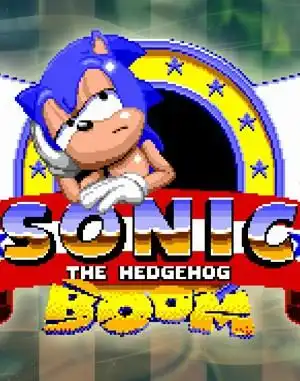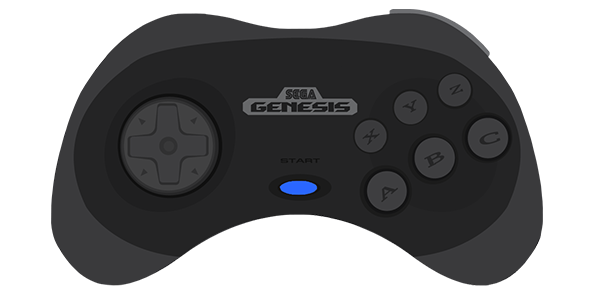The phrase "Sonic 1 Boom" might sound a little confusing at first. Are we talking about the original, lightning-fast Sega Genesis classic, or the later, different "Sonic Boom" sub-franchise? Let's clear the air right away: we're heading back to 1991, to the game that actually caused a massive boom for Sega – the one, the only, Sonic the Hedgehog.
While the "Sonic Boom" series came much, much later with its own style and cast, the real "Sonic 1 Boom" was the cultural earthquake that hit when the original game dropped. It wasn't just a new platformer; it was a statement. It was Sega looking Nintendo square in the eye and saying, "Get ready, because things are about to get fast."
What Exactly Was the "Sonic 1 Boom"? (It Wasn't a Game Title)
Think of it less as a title and more as an event. The "Sonic 1 Boom" refers to the incredible, almost overnight success and impact of the first Sonic the Hedgehog game released for the Sega Genesis (or Mega Drive, depending on where you lived!). Before Sega, Sega was the plucky underdog, struggling to compete with Nintendo's iron grip on the console market, dominated by the NES and the burgeoning Super Nintendo. They needed a mascot, a game, a feeling that could stand toe-to-toe with the mighty Mario.
Enter Sonic.
The Genesis Era: Sega Needed a Superstar
The early 90s were the height of the console wars. Sega had the Genesis, a powerful 16-bit machine, but lacked that killer app, that iconic character that could sell consoles by the truckload. Mario was synonymous with Nintendo. Sega tried with Alex Kidd, but he just didn't have the spark.
They needed speed. They needed attitude. They needed something cool.
Why Sonic 1 Caused a Real "Boom"
So, why did Sonic the Hedgehog explode onto the scene and create such a stir?
- Blinding Speed: Compared to the more deliberate pace of platformers at the time, Sonic was a blur. Zipping through loops, rocketing down slopes – it felt like nothing else. Sega's marketing famously pushed "Blast Processing," a slightly vague term that, for kids, just meant "really, really fast." And it was.
- Edgy Attitude: Mario was cartoony and friendly. Sonic was cool, a little rebellious, tapping his foot impatiently if you left him standing still. He represented a different vibe, one that resonated with an audience looking for something a bit more... dare we say... radical?
- Stunning Graphics & Sound: Sonic 1 showcased the Genesis's capabilities with vibrant colours, smooth scrolling (hello, parallax!), and detailed sprites. The music, composed by Masato Nakamura of Dreams Come True fame, was catchy, energetic, and instantly iconic. Green Hill Zone's theme is still an earworm decades later!
- Smart Marketing: Sega positioned Sonic as the anti-Mario. "Sega Does What Nintendon't" became their battle cry, directly challenging the established king. Bundling Sonic 1 with the Genesis console was a stroke of genius, putting the game directly into millions of homes.
- Gameplay Innovation: While the core was platforming, the emphasis on speed, momentum, and exploration within levels (finding different paths!) felt fresh. Collecting rings, destroying Robotnik's badniks, and freeing the animals – it was simple, addictive fun.
This combination wasn't just a new game; it was a cultural phenomenon. It gave the Genesis its identity, fueled the console war rivalry, and solidified Sega's place as a major player in the 16-bit era. That was the "Sonic 1 Boom."
The Legacy of the Original Blast
Sonic the Hedgehog wasn't just a one-hit wonder. Its success led to equally beloved sequels like Sonic 2 and Sonic 3 & Knuckles, cementing Sonic's status as a gaming icon. While the franchise has evolved (and sometimes stumbled) over the years, the core principles established in that first game – speed, platforming, and a memorable hero – are what fans remember and cherish from that original "boom."
Playing Sonic 1 today, whether on original hardware, through a compilation like the Sonic Origins collection, or via emulation, still captures a piece of that magic. It's a reminder of a time when a blue hedgehog running really fast changed the gaming landscape forever.
Frequently Asked Questions About Sonic 1 & "Sonic Boom"
- Is "Sonic 1 Boom" a real game? No, "Sonic 1 Boom" is not the official title of a game. The term likely refers to the massive popularity and impact of the original Sonic the Hedgehog game (often called "Sonic 1") released in 1991. There is a separate sub-franchise called "Sonic Boom" which started much later (around 2014) with different games, comics, and a TV show.
- When did the original Sonic the Hedgehog come out? The first Sonic the Hedgehog game was released worldwide in 1991 for the Sega Genesis/Mega Drive.
- Why was the first Sonic game so popular? Sonic the Hedgehog was popular for its incredible speed, unique attitude, vibrant graphics, catchy music, and effective marketing campaign that positioned it as a direct competitor to Nintendo's Mario. It offered a fresh, exciting experience that helped define the 16-bit era.
- Where can I play the original Sonic the Hedgehog today? You can play the original Sonic 1 on various modern platforms through official compilations like Sonic Origins (available on PC via Steam or consoles), or sometimes through digital storefronts like the Nintendo eShop or PlayStation Store. Emulation is also an option for playing the original ROMs (ensure you own the physical game first!).


